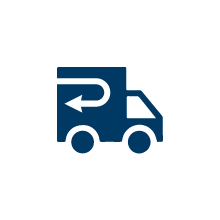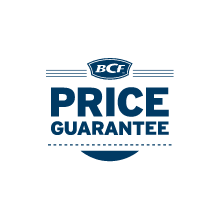Towing a boat is practically a rite of passage for many Aussie adventurers. Whether you're heading to the local ramp or planning a coastal road trip, understanding the basics of boat trailering is essential for safety, compliance, and peace of mind. This guide walks you through everything from legal requirements to launch etiquette and maintenance tips.
Quick Links
Before You Hitch Up: Ratings, Rules & Rego
Tow Vehicle vs Trailer Weights
Understanding towing weights is critical:
-
GVM (Gross Vehicle Mass): Max weight your vehicle can carry, including passengers and cargo.
-
GTM (Gross Trailer Mass): Total weight of the trailer when fully loaded, resting on its own axles and wheels, when hitched to the vehicle.
-
ATM (Aggregate Trailer Mass): Total weight of the trailer when fully loaded, supported by its jockey wheel or stand, unhitched from the vehicle.
-
GCM (Gross Combination Mass): Combined weight of the loaded vehicle and trailer.
Always check your vehicle’s compliance plate or manual and use a weighbridge or digital scales to confirm your setup is within legal limits.
Shop Camec Digital Pressure Gauge
Legal Must-Haves: Lights, Brakes, Safety Chains, Licence Class
-
Brakes on trailers over 750kg GTM.
-
Safety chains rated for the trailer’s weight.
-
Working lights and reflectors.
-
Correct licence class – most recreational setups fall under a standard car licence, but check your state’s rules.
Pre-Trip Checklist
Hitching Correctly
-
Coupler is locked onto the tow ball.
-
Jockey wheel is raised and secured.
-
Safety chains are clipped on.
-
Breakaway system is functional for trailers over 2 tonnes.
Load Balance & Tie-Downs
Distribute weight evenly, with heavier items low and near the axle. Use marine-grade tie-down straps to secure the boat.
Shop Trailer tie-downs & winches
Tyre Pressure, Bearings & Electrics
-
Inflate tyres to recommended PSI.
-
Check wheel bearings for play or noise.
-
Test trailer lights and brake controllers.
Shop Trailer bearing kits & lights
On the Road: Driving & Reversing Tips
Acceleration, Braking & Following Distances
Towing increases stopping distance. Brake early, accelerate gradually, and maintain a safe buffer from other vehicles.
Cornering, Overtaking & Managing Sway
Take wide corners and avoid sudden lane changes. If sway occurs, ease off the accelerator—don’t brake suddenly.
Reversing Techniques
Before your first trip, have a practice run in an empty carpark. Extended mirrors or a reversing camera are worth their weight in gold, and if you've got a mate who can act as a spotter—it'll make life even easier!
First, line up your vehicle and trailer and pull past a little to give yourself enough space. Next, turn the wheel and reverse slowly while straightening as you go. If it’s too tight, pull forward and try again. Remember, it’s not a race! With a bit of practice, you’ll be ready to hit the water like a pro.
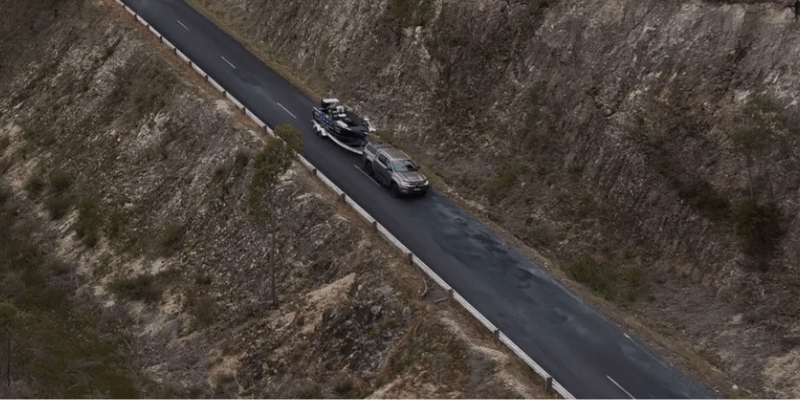
Boat Ramp Etiquette: Launching & Retrieving
Launching
Use the rigging area to prep your boat:
-
Remove tie-downs.
-
Insert the bung.
-
Put the boat key in the ignition (if required).
-
Check that you have all your gear.
Remember not to block the ramp.
-
Reverse the trailer into the water until most rollers and skids are submerged.
-
Apply the vehicle handbrake.
-
Release the winch and safety chain.
-
Use a rope to guide the boat off the trailer.
-
Secure the boat if needed, then move your vehicle.
Retrieving
-
Tie the boat off first, then fetch your vehicle and trailer.
-
Reverse until the boat can float onto the trailer.
-
Apply the vehicle handbrake.
-
Use a rope to guide the boat onto the trailer.
-
Winch the boat up and attach the safety chain.
-
Pull the trailer up the ramp and out of the way.
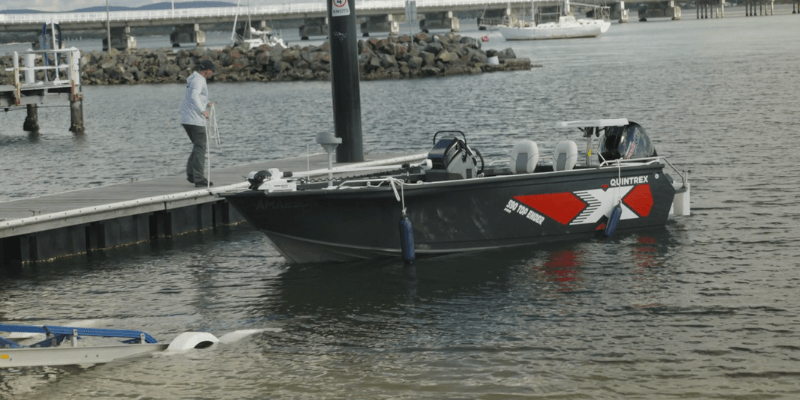
Maintenance & Storage
Rinse, Lubrication & Annual Service Points
-
Rinse trailer after every saltwater trip.
-
Lubricate moving parts (winch, hitch, bearings).
-
Inspect brakes, lights, and suspension monthly.
Long-Term Storage & Security
-
Store in a dry, shaded area.
-
Use wheel chocks and a hitch lock.
-
Cover the boat and trailer.
Troubleshooting Common Issues
Why is my trailer swaying when towing?
Trailer sway is often caused by poor weight distribution or incorrect tyre pressure. Redistribute the load and check your suspension.
Why do my trailer lights keep failing?
Water, corroded connectors, or damaged wires are often to blame. Regularly check your trailer plug and connections to prevent issues.
What is the ideal tyre pressure for boat trailers?
This varies depending on trailer size and tyre type — always check your manufacturer’s specifications. Typical pressures range between 35 and 50 PSI. Keep a spare tyre, jack, and wheel brace with your trailer.
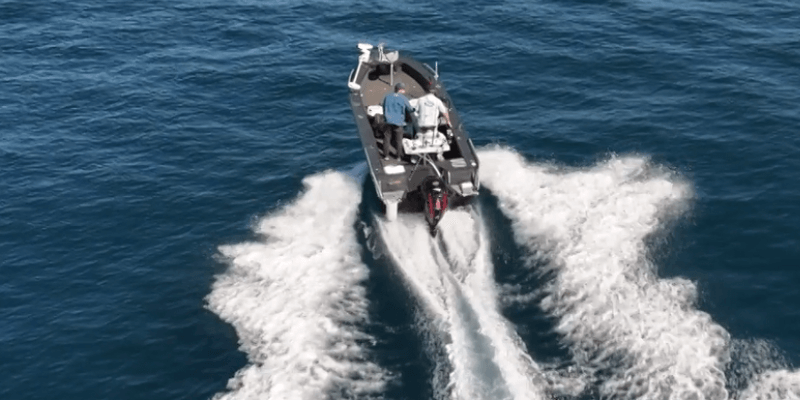
Quick Reference Checklist
Ready to hit the road? With the right setup and a bit of prep, boat trailering can be smooth sailing. Bookmark this guide, share it with your crew, and enjoy the freedom of towing your boat wherever the adventure calls.




